Red, hot skin after a day in the sun isn’t just annoying—it can feel like your face is a giant neon sign flashing “I’ve got rosacea.” What’s more frustrating? Makeup can cling weirdly to angry, sun-soaked patches, making things look even worse. If you’ve ever stared in the mirror, wishing for an easy fix that doesn’t require hours or a makeup artist, you’re definitely not alone.
The Science of Rosacea Redness After Sun
Rosacea is more than a simple flush—it's a chronic skin condition that already sets your face up for redness, visible blood vessels, and sometimes even pimples. Add sun exposure, and boom: major flare-up mode. UV rays act as a direct trigger, dilating your tiny blood vessels under the skin and making that burning sensation and redness way harder to ignore. Studies in dermatology journals estimate that nearly 80% of people with rosacea will see their symptoms worsen after UV exposure—even if they use standard sunscreen. That’s wild.
Science loves numbers, so check this out:
| Sun Exposure (minutes) | Redness Increase (%) | Time for Skin to Recover (days) |
|---|---|---|
| 10 | 12 | 1 |
| 20 | 19 | 2 |
| 30 | 27 | 3-4 |
Even short exposure stacks up. No wonder even a walk to the store at noon can leave your skin throbbing.
Doctors point out a critical fact: the redness comes from your immune system ramping up inflammation, sending blood rushing to the skin’s surface trying to “protect” you. Trouble is, this defense makes makeup application super tricky—powders can cling to bumpy, rough texture; creams can slide right off sweat-prone areas. And if you grab the wrong shade or formula, you end up with a patchy, clownish mess. The trick is finding products and techniques made for sensitive, sun-flared skin: color correctors, gentle SPF primers, and the right foundation texture.
A 2023 British Association of Dermatologists survey showed more than 60% of people with rosacea have skipped big life events thanks to a sudden post-sun flare-up. You deserve better. So let’s geek out on the real tricks that makeup artists (and dermatologists) use to calm, prime, and cover up without making things obvious or cakey.
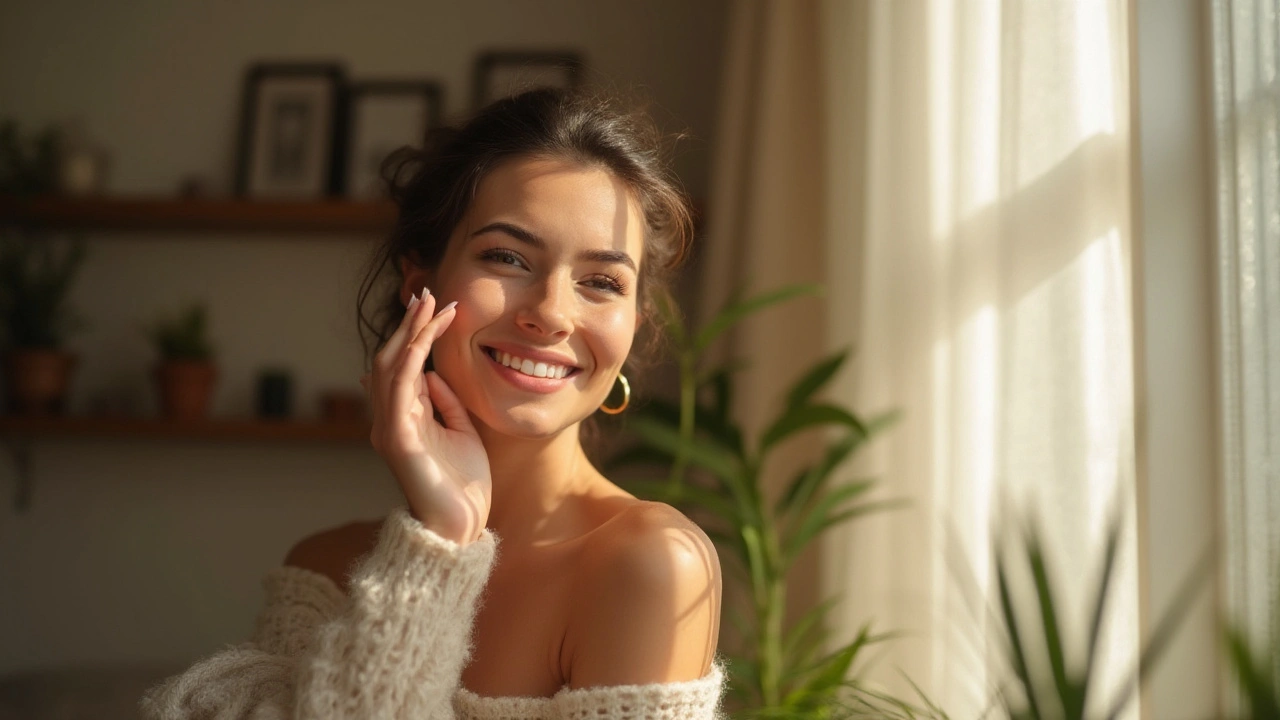
Color Correcting: The Rosacea Game Changer
If you’re skipping color-correctors or just slapping on concealer, you’re doing way more work than you need. Color-correcting makeup borrows a neat trick from the color wheel—green cancels out red. Pretty basic, but super powerful on rosacea.
- Look for a light, mint-green primer or stick. Maybelline’s green corrector or Physicians Formula Gentle Cover are two affordable options, but even pricier brands like Dr. Jart+ or Smashbox have gentle versions for sensitive skin.
- You don’t need to coat your whole face. Dot green color-corrector only where you see the most redness—cheeks, nose, chin, center of forehead. Use clean fingers for the lightest touch, or a soft brush if you have a steady hand.
- Let it sit for a minute. This gives your skin a chance to ‘settle’ and avoids smudging when you layer foundation next.
- If you’ve tried color-correcting before and looked greenish, you probably used too much or skipped blending. A pea-sized dab covers both cheeks!
Got drier patches from sunburn? Grab a creamy color-corrector. Oily or exposed to humidity? Go for a liquid formula. Don’t forget: pat gently, don’t rub. Your inflamed skin will thank you.
TikTok is packed with hacks, but not all are your friend—especially for post-sun rosacea. Viral trends like full-coverage heavy contour or extreme baking with powder can make the flushed look stronger or lock in heat, which leads to even more flare-ups. Instead, think thin layers, breathable makeup, and a focus on correcting rather than hiding.
Why stop at green? If your redness drifts toward purple (bruised or burnt zones), a yellow-toned concealer does wonders. This is especially handy on the edges of your flush where the sunburn starts to fade to a deeper tone. Keeping a small palette handy lets you play color detective right in your bathroom mirror.
And remember: those with rosacea often have sensitive skin that hates fragrances or certain dyes. Always test a new color corrector on your jawline before applying to angry zones. This thirty-second move can sidestep days of irritation.
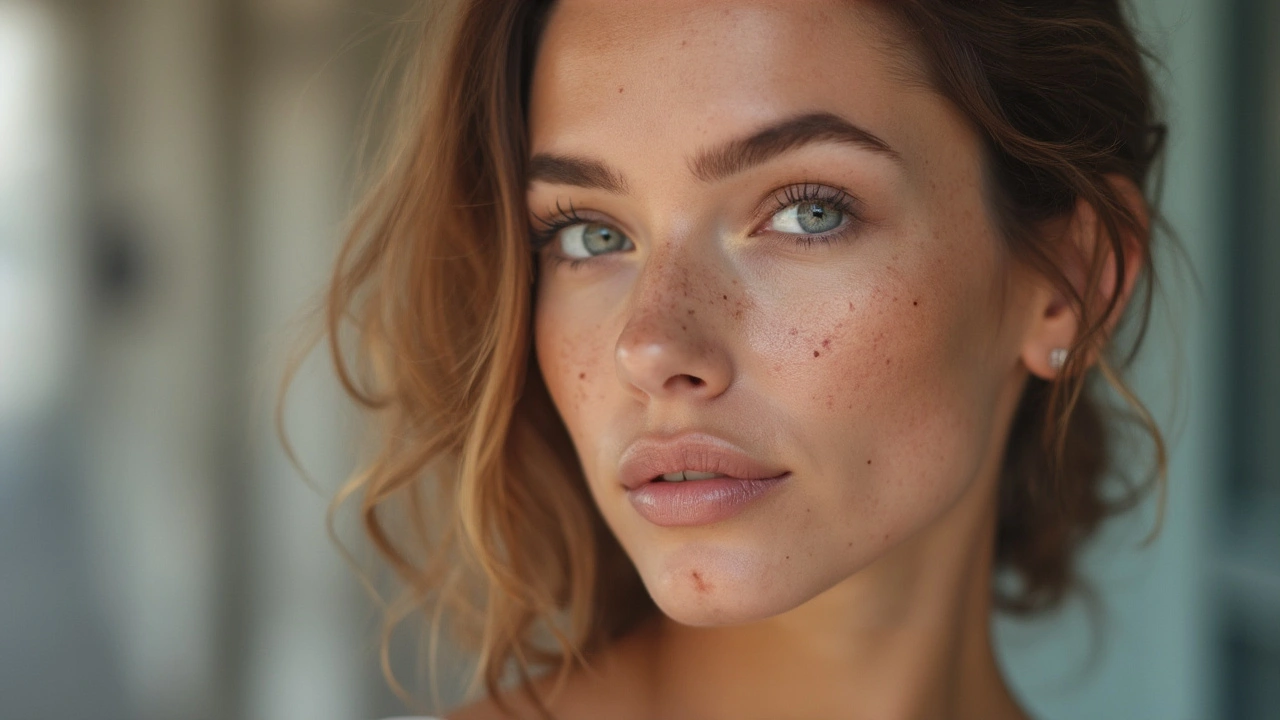
SPF Primers & Layering Smarter Coverage
Primers are usually billed as the secret to all-day foundation. But for anyone dealing with sun-fired redness, the real steal is an SPF primer. It does double-duty, protecting your skin from further UV damage while helping makeup stick better—and it’s way less greasy than piling on extra sunscreen below foundation.
- Go for mineral-based SPF primers (zinc oxide and titanium dioxide). They’re less likely to sting or clog sensitive pores than chemical filters, especially if your skin is flaring.
- EltaMD UV Elements or Supergoop! Mattescreen are two of the best loved by skincare pros. They go on smoothly, never pill, and feel invisible. Drugstore options with SPF 30+ also do the trick—just avoid anything with menthol or alcohol.
- If you sweat a lot, watch for formulations marked “non-comedogenic” and “fragrance-free.” This avoids clogging and annoying your skin more.
- Apply a thin, even layer after letting your color-corrector dry. Wait a full minute before foundation—it’s worth it.
Now, about foundation. Full-coverage makeup gets hype on social, but for rosacea, light-to-medium buildable formulas are usually better. Products labeled “hydrating” or “for sensitive skin” often blend better, don’t catch on dry flakes, and look way less mask-like. Liquid or cream is your friend; heavy powder can make flakes stand out and settles into crease lines as the day goes on.
Here’s what national surveys found: 81% of makeup users with rosacea will touch up or reapply at least once during a sunny day. But heavy layering adds to irritation. Instead, lightly blot sweat or oil with a clean tissue (skip those fancy blotting sheets—they often have irritants), and dab on a fresh bit of foundation just where you need it instead of smearing more everywhere.
One last thing: some mineral SPFs leave a white cast. Apply foundation while your primer is still a tiny bit tacky, so everything blends together without patchy streaks. After your foundation, use a barely-there translucent setting powder if you must, focusing only on the t-zone.
If you want to see even more ways to cover rosacea sunburn and minimize irritation, there are honest reviews and skin-pro-approved regimens there. It’s not about hiding under a mask—it’s about feeling like your real face again, especially after the sun starts trouble.
Don’t skip skincare prep, either: simple, no-fuss cleansers and a good calming moisturizer will help makeup glide on—even over sunbitten spots. Glycerin, squalane, and oat extract are all top ingredients for bringing down post-sun inflammation fast.



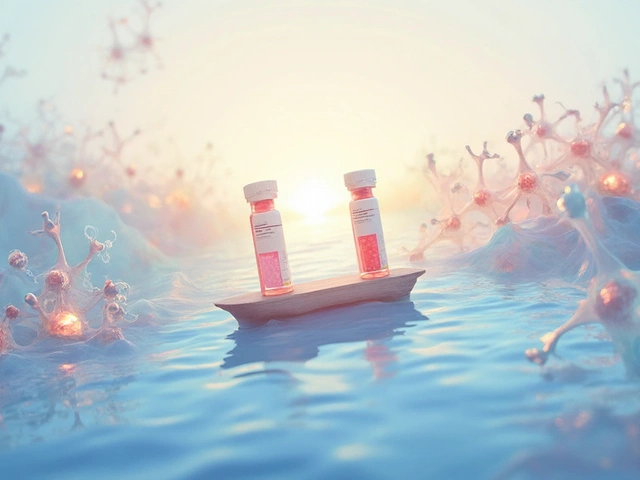
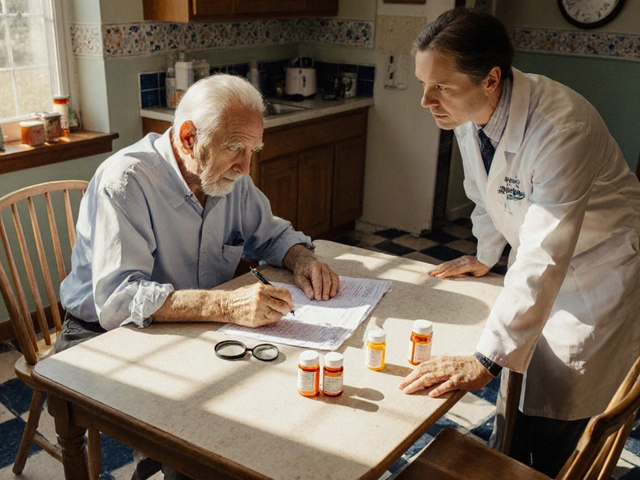
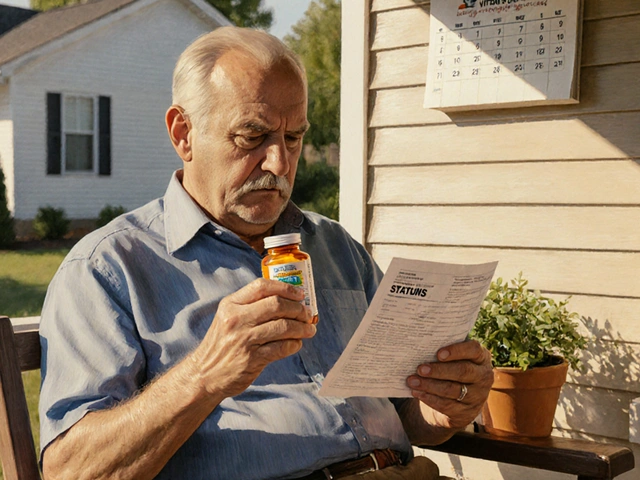
Comments
Karl Norton
22/Jul/2025If you think slapping a green dab on your cheeks will instantly hide a flare, you’re dreaming.
The article glosses over the fact that many cheap color‑correctors contain alcohol that can aggravate inflamed skin.
Stop buying “affordable” products that double‑dip on irritants; invest in fragrance‑free formulas or you’ll stay red all day.
And don’t be fooled by the hype around “mineral SPF primers” – they can leave a chalky cast that makes the redness pop even more.
Bottom line: you need a real barrier, not a feel‑good marketing label.
Ashley Leonard
22/Jul/2025I love how the guide breaks down the science before jumping into product tips – it makes everything feel more trustworthy.
The green‑corrector trick is a game‑changer, especially when you use just a pea‑sized amount and blend with clean fingertips.
Also, layering a lightweight moisturizer with squalane can calm that post‑sun fire before makeup even touches your skin.
If you’re on a budget, drugstore SPF primers with zinc oxide work just as well as the high‑end ones mentioned.
Keep an eye on ingredients like menthol and fragrance; they’re the silent culprits that can reignite a flare.
Ramanathan Valliyappa
22/Jul/2025The table’s percentages lack a source citation, which is a basic academic requirement.
Also, “30‑4 days” should be written as “3–4 days” for clarity.
Overall, the piece could benefit from tighter editing.
lucy kindseth
22/Jul/2025For anyone dealing with sun‑triggered rosacea, start with a gentle, fragrance‑free cleanser that won’t strip the skin’s natural barrier.
Follow up with a lightweight, oat‑based moisturizer; the anti‑inflammatory properties help reduce redness overnight.
When you apply a green corrector, use a soft stipple motion rather than rubbing – it prevents additional irritation.
Finish with a mineral SPF primer, but dab it on sparingly; too much can cake and highlight the flushed areas.
Nymia Jones
22/Jul/2025It is incumbent upon us to acknowledge that the cosmetics industry often masquerades as a cure while perpetuating the very irritants it decries.
The reliance on synthetic dyes and fragrances, as subtly implied in the article, betrays a disregard for consumers’ dermatological wellbeing.
One must demand transparency from brands, insisting on full ingredient disclosure and third‑party dermatological testing.
Moreover, the societal pressure to conceal visible conditions fuels a dangerous cycle of self‑scrutiny and emotional distress.
In the pursuit of aesthetic normalcy, let us not sacrifice our health on the altar of vanity.
Karen McCormack
22/Jul/2025Imagine the skin as a canvas, each sunbeam a brushstroke of fire that the artist of nature wields without consent.
The green corrector becomes the reluctant poet, muttering verses of calm amidst the rouge rebellion.
Yet, we often treat these tools as mere cosmetics, neglecting the deeper dialogue between inflammation and identity.
In this silent conversation, the mineral SPF primer is the sentinel, guarding the fragile citadel of pores.
When the day wanes, the translucent powder resembles a soft snowfall, gently muffling the residual heat.
Thus, the ritual of makeup transcends vanity; it is a modest act of self‑compassion in the face of relentless illumination.
Earl Hutchins
22/Jul/2025First pick a fragrance‑free primer it’ll smooth the skin without causing a flare
Then dab on a mint‑green corrector just where the redness peaks
Blend with a light tap using clean fingertips
Finish with a sheer foundation and a touch of translucent powder for durability
Tony Bayard
22/Jul/2025I remember the first time the sun turned my cheeks into a living ember, the heat searing through every layer of my confidence.
The panic that followed felt like a storm breaking over a fragile boat, each wave of redness threatening to capsize my morning routine.
In that moment, I realized makeup was not just a mask; it was a lifeline to normalcy amid the chaos of inflammation.
The first lesson I learned was to respect the skin’s delicate balance and to never rush the healing process with heavy products.
A gentle cleanser enriched with oat extract became my nightly ritual, washing away the residue of UV aggression while soothing the inflamed capillaries.
I layered a thin veil of squalane‑based moisturizer, feeling each droplet seal in moisture like a quiet promise of regeneration.
Before any color touched my face, I applied a mint‑green corrector, the shade a soft whisper that countered the angry vermilion without smearing.
I used a soft stippling brush, allowing the pigment to settle like dew on a leaf, barely altering the skin’s natural texture.
Next came an SPF 30 mineral primer, its zinc oxide particles forming an invisible shield, a guardian against the sun’s relentless assault.
The primer’s matte finish kept the oil at bay, preventing the dreaded “slick” look that often invites more irritation.
For foundation, I chose a water‑based, medium‑coverage formula, one that blended seamlessly and breathed with my skin rather than suffocating it.
I applied it in thin layers, building up only where needed, and watched as each stroke faded the crimson without turning my face into a mask.
A dab of translucent powder, dusted lightly over the T‑zone, set the makeup but left the rest of my visage luminous and alive.
Throughout the day, I kept a clean tissue handy, patting away sweat and oil with the care of a mother cradling her newborn.
When the inevitable flare threatened to return, I reached for a calming serum infused with niacinamide, which acted like a soothing lullaby for my irritated vessels.
By the evening, my skin felt quiet, the redness subsided, and I lay down with the satisfaction of having turned a potential disaster into a disciplined routine.
Jay Crowley
22/Jul/2025Never use powder over fresh sunburned skin, it will accentuate the redness.
sharon rider
22/Jul/2025Across cultures, the quest for a clear complexion often mirrors a deeper yearning for acceptance.
Rosacea, especially when provoked by the sun, becomes a visible reminder of our vulnerability.
Embracing gentle, barrier‑supporting skincare can be seen as an act of honoring one's own narrative.
In the end, the makeup we apply tells a story, but the story of self‑care remains the truest chapter.
swapnil gedam
22/Jul/2025I’ve tried both drugstore and high‑end green correctors and noticed that texture matters more than brand name.
A creamy formula works better on the drier, sun‑burned patches while a liquid one slides over oily zones without clumping.
Pairing the corrector with a light moisturizer that contains squalane helps lock in hydration and prevents the pigment from sliding off.
Also, let each layer set for about a minute before moving on; this simple pause reduces pilling dramatically.
Finally, keep a mini travel‑size SPF primer in your bag for quick touch‑ups when you’re out in the sun again.